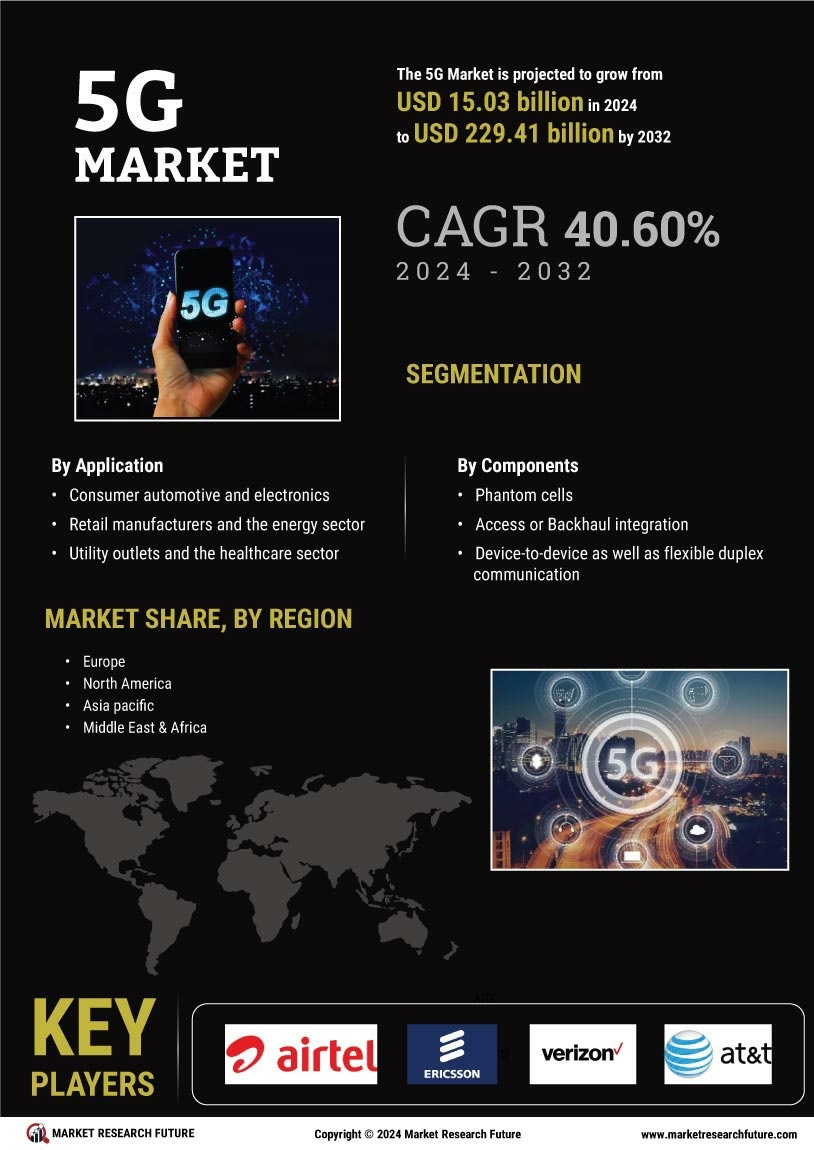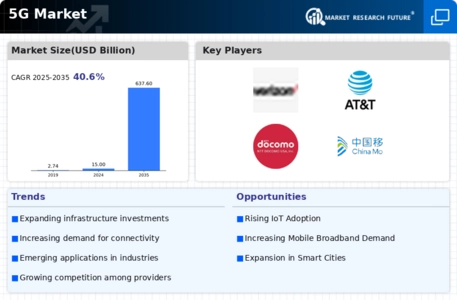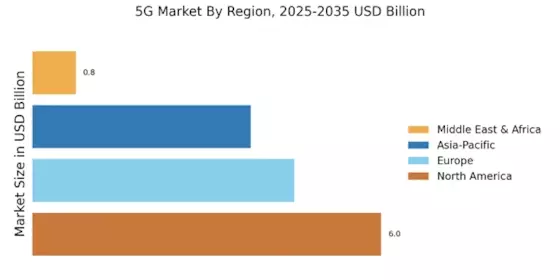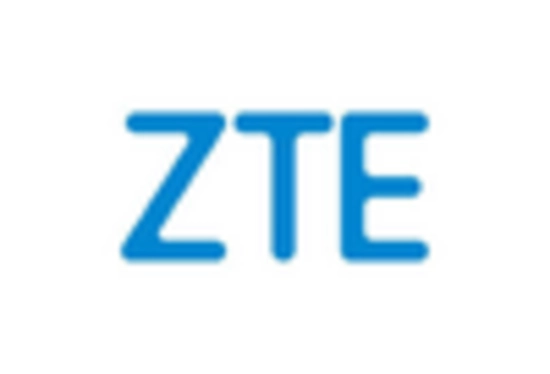Emergence of New Business Models
The emergence of new business models is reshaping the landscape of the 5G Market. Companies are exploring innovative ways to leverage 5G Market technology to create value-added services and enhance customer experiences. For instance, subscription-based models for high-speed internet access and pay-per-use services for IoT devices are gaining traction. This shift is driven by the need for flexibility and scalability in an increasingly digital world. The 5G Market is likely to see a proliferation of such models as businesses adapt to changing consumer preferences. Furthermore, the potential for monetizing data generated by connected devices presents new revenue streams for companies. As these business models evolve, they will play a pivotal role in driving growth within the 5G Market.
Expansion of Edge Computing Solutions
The expansion of edge computing solutions is emerging as a critical driver for the 5G Market. Edge computing allows data processing to occur closer to the source, reducing latency and improving response times. This is particularly important for applications that require real-time data analysis, such as autonomous vehicles and industrial automation. The 5G Market is well-positioned to support these developments, as 5G Market networks can facilitate the rapid transfer of data between devices and edge servers. As industries increasingly adopt edge computing to enhance operational efficiency, the demand for 5G Market infrastructure will likely grow. Market analysts suggest that the edge computing market could reach over 15 billion dollars by 2025, indicating a strong correlation with the expansion of the 5G Market.
Advancements in Smart City Initiatives
Smart city initiatives are significantly influencing the 5G Market. Cities are increasingly adopting smart technologies to improve urban living, enhance public safety, and optimize resource management. The integration of 5G Market technology is crucial for these initiatives, as it supports the vast number of connected devices and the data they generate. For instance, smart traffic management systems rely on real-time data to reduce congestion and improve safety. The 5G Market is poised to benefit from these developments, with projections indicating that smart city investments could reach trillions of dollars in the coming years. As municipalities recognize the potential of 5G Market to facilitate these advancements, the demand for 5G Market infrastructure and services is expected to rise, driving growth in the 5G Market.
Rising Demand for High-Speed Connectivity
The increasing demand for high-speed connectivity is a primary driver of the 5G Market. As consumers and businesses alike seek faster internet speeds, the transition from 4G to 5G Market becomes imperative. According to recent data, 5G Market networks can deliver speeds up to 100 times faster than their predecessors, enabling seamless streaming, gaming, and real-time applications. This demand is not limited to urban areas; rural regions are also experiencing a push for enhanced connectivity. The 5G Market is responding to this need by expanding infrastructure and investing in new technologies to meet consumer expectations. As more devices become connected, the necessity for robust and reliable networks will likely continue to grow, further propelling the 5G Market forward.
Increased Adoption of Augmented and Virtual Reality
The growing adoption of augmented reality (AR) and virtual reality (VR) technologies is a significant driver for the 5G Market. These technologies require high bandwidth and low latency to function effectively, making 5G Market networks an ideal solution. Industries such as gaming, education, and healthcare are increasingly leveraging AR and VR to enhance user experiences and improve training outcomes. For example, the gaming industry is projected to reach a market size of over 200 billion dollars by 2025, with a substantial portion attributed to AR and VR applications. The 5G Market stands to gain from this trend, as the demand for immersive experiences continues to rise. As more companies invest in AR and VR, the reliance on 5G Market technology will likely increase, further propelling the growth of the 5G Market.


















Leave a Comment